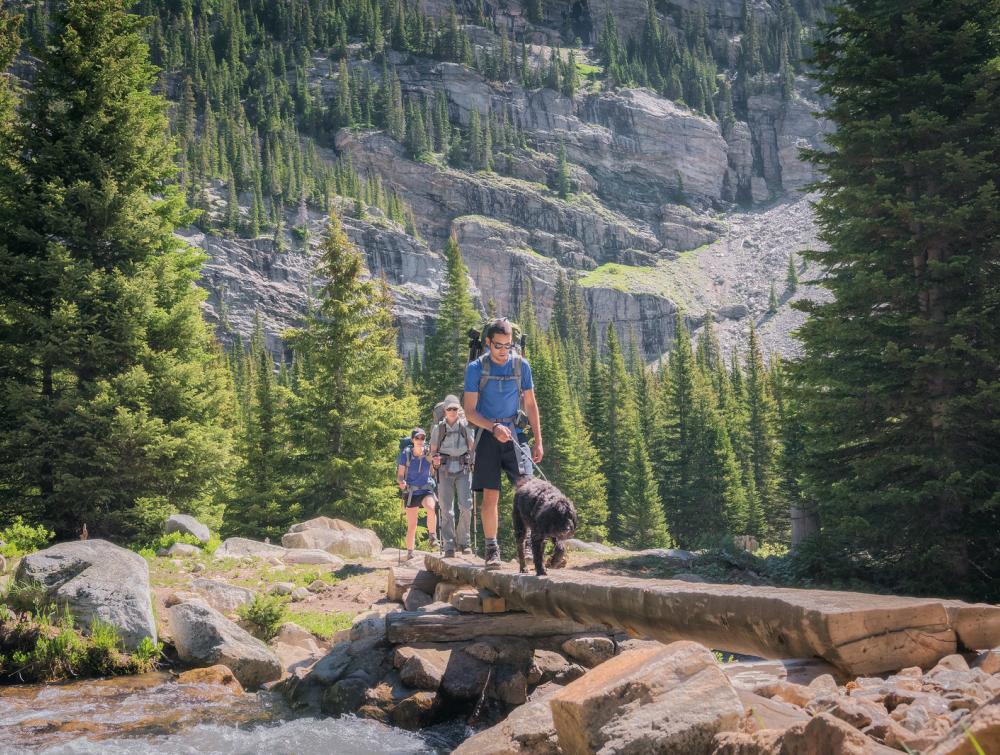America's top program for protecting parks ends soon. Here's why we still need the Land and Water Conservation Fund.

Indian Peaks Wilderness, CO
Mason Cummings, The Wilderness Society
UPDATE: In September 2018, Congress allowed the long-running and popular Land and Water Conservation Fund (LWCF) to expire.
The Land and Water Conservation Fund (LWCF) has been called "the single most important program" for guaranteeing access to public lands. It was designed so there would always be money available for its core purpose of completing national parks, forests, wildlife refuges and other protected sites, without burdening American taxpayers. Not only does it benefit our federal public lands, but it has impacted nearly every county in the United States by protecting local parks, ballfields and recreation centers.
It does this by drawing on revenues from oil and gas drilling on the Outer Continental Shelf to pay into thousands of projects nationwide, gaining popularity across the political spectrum.
But despite broad bipartisan support for the program, billions of dollars have been diverted from the Land and Water Conservation Fund by Congressover the course of the program’s life to pay for unrelated expenses, leaving many outdoor projects unfinished and parcels of land unprotected. In recent years, the political fringes have taken to attacking the program, and its funding has hovered around one-third of the full authorized level, even as new pressures intrude on wildlands and shared spaces become developed, fragmented or otherwise damaged.
We're asking lawmakers to step in and rescue LWCF, demanding permanent reauthorization and full funding for the program.
Explore LWCF projects near you
Tips on how to use the map below:
- Enter your zip code at top left to see projects near you. National projects are pin drops (approximate location).
- To view state matching grant projects, click a county.
- Data available in "show related records" (Data thru 2014) (Note: Map works best in IE, Safari, iOS)
Land and Water Conservation Fund pays our lands and waters back
Signed into law in 1964, the Land and Water Conservation Fund is a far-reaching program whose core purpose is intuitive yet visionary: paying the planet back for some of what we take out of it.
Companies that drill for (publicly owned) oil and gas on the Outer Continental Shelf off our shores pay a portion of their revenues into the Land and Water Conservation Fund—that source makes up the vast majority of the fund--and that money goes into a trust to acquire “inholdings,” or pieces of private land within the borders of national parks, forests, wildlife refuges and other protected sites.
When the federal government buys inholdings, it can make a piece of public land “whole” and simpler to manage as a complete landscape. This makes it easier to protect wildlife habitat and make the place accessible for outdoor recreation—all without relying on taxpayer money. Parks benefiting from this program range from the Grand Canyon to Gettysburg National Military Park to, in all likelihood, a hiking trail or ballfield near you. The LWCF was designed so there would always be money available for this purpose, without burdening American taxpayers.
Key facts about the Land and Water Conservation Fund
- Long list of successes. LWCF has been used to protect iconic landscapes in all 50 states, and for more than 41,000 state and local projects.
- Projects often serve multiple purposes. Oftentimes, a successful LWCF project serves multiple purposes--and does far more than just extend a boundary on a map. For example, inholdings acquired next to Arizona’s Sycamore Canyon Wilderness, in the Coconino National Forest, helped preserve the trailheads of two hiking trails plus important archaeological resources and streams that provide drinking water for Phoenix. In Washington’s Mount Rainier National Park, LWCF funds helped pay to relocate a road that frequently washed out, causing expensive flooding. The project greatly reduced overall maintenance costs and allowed visitors access to popular areas of the park.
- Preventing LWCF money from being siphoned away is a perennial struggle. Despite broad bipartisan support for the program, billions of dollars have been diverted from the Land and Water Conservation Fund by Congress over the course of the program’s life to pay for unrelated expenses, leaving many outdoor projects unfinished and parcels of land unprotected. In recent years, funding for LWCF has hovered around one-third of the full authorized level, even as new pressures intrude on wildlands and shared spaces become developed, fragmented or otherwise damaged.
- LWCF will expire later this year. In late 2015, after months of fighting whipped up by a few extreme lawmakers, Congress struck a deal for a three-year extension of LWCF after the program's authorization lapsed. We will demand permanent reauthorization and full funding for LWCF.
